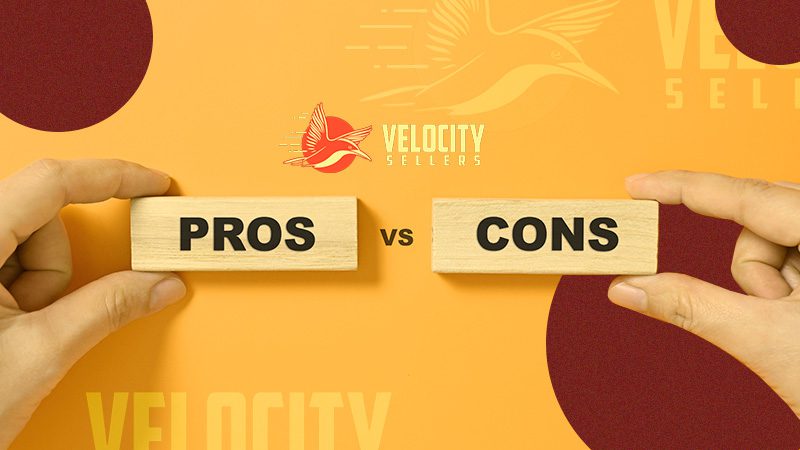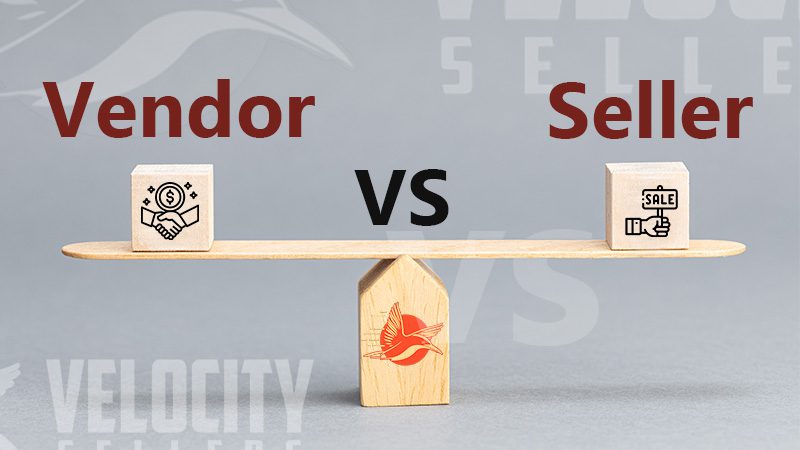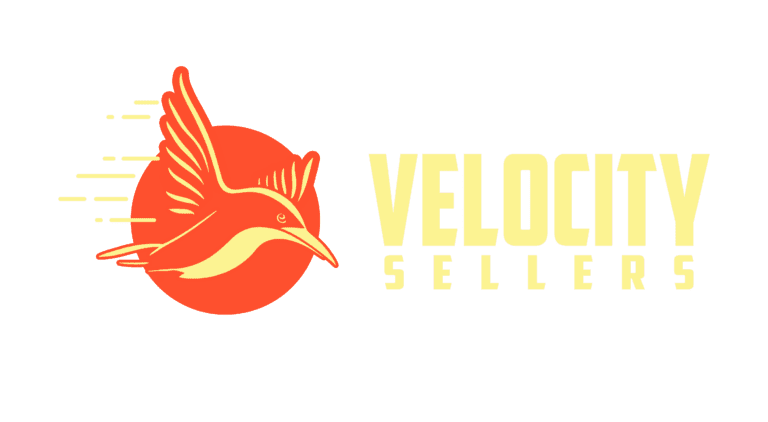In the bustling and ever-evolving marketplace of Amazon, the choice between becoming a vendor or a seller—embodied in the “Amazon Vendor vs. Seller” decision—is of paramount significance. However, it’s crucial to note that the opportunity to become a Vendor is an exclusive one, extended by invitation only by Amazon. This unique aspect profoundly influences the landscape of choices available to you. Imagine yourself at the crossroads of e-commerce, where the path you choose—accessible or invite-only—will significantly impact your journey.
Are you an aspiring entrepreneur, ready to embark on your Amazon adventure, or an established business seeking to expand your digital footprint? Consequently, choosing between being a vendor and a seller isn’t just about selecting an account. Being a vendor is an exclusive Amazon offer, while being a seller is more universally accessible. This distinction is crucial in the “Amazon Vendor vs. Seller” debate. It’s about defining a pivotal strategy that will shape your destiny in the expansive realm of Amazon. Furthermore, this “Amazon Vendor vs. Seller” decision will significantly impact your journey.
The ripples of this decision touch every aspect of your operation—from customer communication to the daily management of your Amazon account, which can ultimately define your success. Indeed, this article is your guiding star, designed to demystify the complexities and help you confidently navigate the Amazon universe. As we traverse this multifaceted landscape, subsequently, we’ll subsequently delve into the heart of the matter, exploring the stark differences, assessing the advantages and disadvantages, and ultimately, equipping you with the knowledge needed to make a well-informed choice.
By the end of this comprehensive guide, you’ll be empowered to choose the Amazon account type that aligns perfectly with your unique aspirations and objectives. Understanding the exclusive nature of the Vendor option will be key to your decision.
Understanding Amazon Vendor and Seller Accounts
As we embark on the journey of comprehending the Amazon landscape, it’s imperative to establish a comprehensive understanding of the two distinct account types offered by this e-commerce behemoth.
Define “Amazon Vendor vs. Seller” Accounts:
- Amazon Vendor Accounts are tailored for businesses looking to supply their products directly to Amazon, a key consideration in the “Amazon Vendor vs. Seller” framework. Specifically, in this model, you become a supplier to Amazon itself. The platform buys your products in bulk, manages inventory, and handles order fulfillment, delineating a clear distinction in the “Amazon Vendor vs. Seller” choice. Therefore, this account type is well-suited for established brands and businesses that want the retail giant to take charge of the supply chain.
In contrast, Amazon Seller Accounts empower you to be an independent merchant, selling your products directly to Amazon customers. You maintain control over your inventory, pricing, and customer interactions. Seller accounts are ideal for those who seek a hands-on approach to managing their business on Amazon’s platform.
Key Differences:
- The fundamental differences between these two account types form the bedrock of your Amazon experience. Vendors are essentially suppliers to Amazon, whereas sellers are entrepreneurs who navigate the Amazon marketplace with autonomy. As a vendor, you relinquish some control but gain the advantage of Amazon’s vast reach and logistics capabilities.
You wield more power as a seller but must manage various aspects of your business independently. Understanding these distinctions is pivotal, as it will consequently guide your Amazon journey. The choice between being a vendor or a seller should thus align with your business goals. It should also match the nature of your products and your specifically preferred level of control and responsibility.
In the subsequent sections, we will delve deeper into these critical differences. We aim to offer insights and guidance for an informed choice suited to your Amazon objectives.

The Pros and Cons of Being an Amazon Vendor
Exploring the realm of Amazon vendors reveals a multifaceted landscape rife with opportunities and challenges that demand careful consideration.
Pros
- Access to Amazon Retail: One of the most alluring benefits of choosing the path of an Amazon vendor is direct access to Amazon Retail. This is particularly advantageous for established brands wanting to expand their market presence. By becoming a vendor, you’re essentially opening the doors to Amazon’s vast customer base. The exposure is unparalleled, giving your products visibility to the millions of Amazon shoppers.
- Bulk Orders and Predictable Payments: Vendors often bask in the advantages of bulk orders and their financial predictability. As the purchaser, Amazon frequently places substantial demands on products, ensuring a steady revenue stream. Predictable payments can be an economic boon, facilitating better financial planning and stability.
- Amazon Handles Customer Service: For vendors, the relief of having Amazon manage customer service and returns is a substantial boon. This means that the often complex and time-consuming task of dealing with customer inquiries, complaints, and returns falls into the capable hands of Amazon. Vendors can thus focus more intently on what they do best: developing and perfecting their products.
Cons
- Limited Control: A significant consideration is that vendors may have limited control over pricing and branding. Amazon often exerts authority in setting product prices. Consequently, vendors may seek more autonomy over how their products are presented to customers. Striking a balance between the Amazon framework and your branding vision can take time and effort.
- Complexity and Bureaucracy: However, the vendor’s journey is not without its intricacies. Complexity and potential bureaucratic processes may present hurdles to overcome. Navigating Amazon’s systems, compliance requirements, and reporting standards can be demanding.
Vendors must adapt to the operational guidelines laid out by Amazon. This adaptation is a process that sometimes requires a learning curve and ongoing vigilance.
- Stringent Requirements: Amazon may impose strict requirements and performance standards on vendors. Meeting these standards is not optional; it’s essential for maintaining a fruitful vendor relationship. These requirements include product quality, fulfillment speed, and order accuracy. Complying with these standards is necessary but can be an ongoing challenge.
As we dive deeper into this section, we will further dissect each of these pros and cons, equipping you with a profound understanding of the intricate world of being an Amazon vendor. This knowledge will empower you to make an educated decision aligned with your business aspirations and strategies.
The Pros and Cons of Being an Amazon Seller
Navigating the Amazon seller’s journey reveals multiple opportunities and challenges, each deserving a closer look.
Pros
- Control Over Branding: Being an Amazon seller grants you a significant advantage – control over your branding and pricing. Indeed, this autonomy means you can craft a unique brand identity. It allows you to tell your story in a way that sets you apart in the crowded Amazon marketplace. Additionally, it extends to pricing strategies, allowing you to find the sweet spot between competitiveness and profitability, which is a crucial element of your success.
- Direct Customer Interaction: One of the most potent assets of being an Amazon seller is the opportunity for direct customer interaction. You’re not merely a product provider but a merchant who can personally engage with your customers. This direct connection opens the door to building genuine relationships, nurturing customer loyalty, and adapting your offerings based on feedback, thereby forging an ever-evolving and responsive brand.
- Lower Entry Barriers: Amazon seller accounts present a relatively straightforward and accessible entry point for aspiring entrepreneurs and small businesses. The setup process is streamlined, and the financial commitment is often less demanding than vendor accounts’ complexities. This makes it an enticing choice for those looking to enter the Amazon marketplace with less initial investment.
Cons
- Handling Customer Service: However, Amazon sellers must be prepared to take on the responsibility of managing customer service and returns. While direct customer interaction is a valuable asset, it also places you as the first line of contact. You’ll handle customer inquiries, complaints, and returns. Excelling in this aspect requires a dedication to customer satisfaction and efficient issue resolution.
- Competitive Marketplace: The Amazon seller marketplace is a bustling, competitive arena. With millions of sellers vying for customer attention, standing out can be an uphill battle. Staying ahead of the competition means continuous optimization of your product listings, marketing strategies, and pricing. Creativity and adaptability are your allies in this fiercely competitive environment.
- Fulfillment Challenges: Amazon sellers also grapple with the challenges associated with fulfillment and inventory management. Ensuring timely and reliable delivery, maintaining optimal inventory levels, and dealing with peak sales seasons require a well-structured logistics management approach. This aspect demands vigilance and precision to ensure a seamless customer experience.
As we delve further into this section, we will explore each of these pros and cons. We aim to provide comprehensive insights and strategies. This will enable an informed choice in line with your goals as an Amazon seller.

Factors to Consider
In the labyrinth of Amazon’s digital marketplace, the choice between becoming a vendor or a seller is pivotal and demands careful consideration. Several crucial factors should be brought to the forefront of your strategy. They are essential to making the decision that best aligns with your business aspirations.
Business Goals:
- Your business goals are the North Star guiding this decision-making process. What do you aspire to achieve in the Amazon ecosystem? If your vision is one of rapid growth and market expansion, then a vendor account might be the right avenue, providing access to Amazon Retail’s vast customer base. Alternatively, your priority is maintaining close control over your brand identity and pricing strategies. In that case, the seller path empowers you to be the captain of your ship, directing your business according to your vision. The choice should harmonize seamlessly with your long-term objectives.
Market Analysis:
- The significance of conducting a thorough market analysis before making this choice cannot be overstated. Dive deep into your target niche, studying its competitive landscape, customer preferences, and emerging trends. Market dynamics significantly determine whether a vendor or seller account is the most conducive path for your products. An in-depth understanding of your niche ensures you’re prepared to address customer needs and stand out in the marketplace.
Resources and Expertise:
- Assess your help and expertise meticulously. Being a vendor often entails substantial investments in product development, inventory management, and logistics. It may also demand a team with specific skills to navigate these complexities. On the other hand, sellers require a keen understanding of e-commerce operations. This includes crafting compelling product listings and developing effective marketing strategies. Reflect on your team’s strengths and capacities to ensure they align with your chosen path’s demands. It’s a balancing act between available resources and the proficiency needed to excel in your chosen role.
As we continue through this article, we will dig deeper into each of these factors, offering you insights, strategies, and real-world examples to empower you in making an informed decision that aligns with your unique business objectives and propels you toward success in the Amazon marketplace.

Making Your Decision
The choice between being an Amazon vendor or seller is a pivotal crossroads that can significantly shape your e-commerce journey. As we distill the wealth of information presented in this article, let’s recap the key points from our exploration of the pros and cons of each role.
If the path of an Amazon vendor beckons to you, bear in mind the alluring prospect of direct access to Amazon Retail, the potential for bulk orders, and the assurance that Amazon will deftly handle customer service and returns, but also recognize the potential intricacies, the relinquishing of some control over pricing and branding, and the demanding performance standards that come with this choice.
On the other side of the coin, if you lean toward the role of an Amazon seller, you revel in the control over branding and pricing, the power of direct customer interaction, and the lower entry barriers. However, prepare to shoulder the responsibility of customer service, understand the highly competitive nature of the seller marketplace, and be ready to address fulfillment challenges.
To facilitate your decision-making process, consider this step-by-step guide
- Define Your Goals: Start by clearly defining your long-term business objectives and what you aspire to achieve on the Amazon platform.
- Conduct Market Research: Dive deep into your niche, comprehensively analyze the competitive landscape, and gain a profound understanding of customer preferences.
- Assess Your Resources: Thoughtfully evaluate the financial and human resources at your disposal. Consider whether your team possesses the expertise needed for your chosen path.
- Learn from Case Studies: Seek inspiration and insights from the real-world case studies we’ve explored. Apply relevant strategies from these success stories to your unique circumstances.
- Balanced Reflection: Delve into the pros and cons of each role, and align them meticulously with your overarching business goals and available resources.
- Consultation: If you’re still uncertain, reach out to experienced e-commerce professionals, mentors, or others who have trodden these paths for valuable guidance.
By methodically navigating through these steps, you’ll emerge with a well-informed decision that resonates with your unique business objectives and harmonizes seamlessly with the ever-evolving landscape of Amazon. Thus, your choice is not merely a selection; it’s the opening chord of a symphony of entrepreneurship, and we eagerly anticipate the remarkable movements you’ll compose in the world of e-commerce.
Case Studies
In the dynamic world of Amazon commerce, real-world examples and case studies serve as beacons of inspiration and guidance. These stories of businesses that have ventured down the vendor and seller paths provide invaluable insights into the choices.
- Vendor Success Story: Take, for instance, [Insert Company Name], a renowned player in the [Insert Niche] industry. Their journey as an Amazon vendor speaks volumes about the potential for established brands. By choosing a vendor account, they gained direct access to Amazon Retail’s vast customer base. Subsequently, through strategic partnerships with Amazon, their growth trajectory skyrocketed. Finally, discover how this successful brand effectively harnessed the logistics and reach of Amazon to realize its vision.
- Seller Success Story: In contrast, the story of [Insert Company Name], a nimble startup in the [Insert Niche], paints a different picture. Embracing the role of an Amazon seller, they showcased the power of direct customer interaction. Moreover, through careful branding, personalized customer service, and an unwavering commitment to their vision, they built a thriving business with a unique brand identity. Consequently, their journey is a testament to the possibilities available to sellers who seek to cultivate customer loyalty and thrive in the competitive Amazon marketplace.
By immersing yourself in these case studies, you’ll uncover the strategies and tactics that fueled the success of these businesses. Their experiences provide a wealth of practical insights, highlighting the distinct advantages and opportunities that await those who carefully navigate the complexities of Amazon, ultimately guiding you toward a decision aligned with your specific business objectives.
Final Thoughts and Best Practices in “Amazon Vendor vs. Seller” Decision-Making
As we conclude our journey through the diverse landscape of Amazon’s digital marketplace, we must crystallize the key insights we’ve uncovered. The choice between becoming an Amazon vendor or seller is not just a checkbox; it’s a critical strategic move that will significantly shape your e-commerce odyssey.
Throughout this article, we’ve unveiled the fundamental distinctions between vendor and seller accounts, meticulously exploring the advantages and disadvantages of each path. We’ve scrutinized the pivotal role of understanding your business goals, the imperative of market analysis, and the critical need to assess the resources and expertise at your disposal before reaching a decision.
Including real-world case studies has not only lent practicality to the theoretical but also illuminated the different strategies and outcomes businesses have achieved through these choices. They prove the Amazon marketplace is a fertile ground for diverse and innovative business models.
Yet, the outcome of this narrative falls into your capable hands. The Amazon universe is a sprawling canvas of opportunities, and your choice should be a canvas of your unique aspirations. Consider your long-term goals, your niche within the marketplace, and the resources you can marshal for your endeavor.
As we part ways, we encourage you not to rush this decision. Take your time, weigh your options carefully, and make choices that resonate with your business objectives. Whether you embark as a vendor or a seller on Amazon, know that it’s not just a choice – it’s the inaugural chapter of an exciting story in the ever-evolving realm of e-commerce.
Continue learning with our previous guide: Amazon Management: Pay-Per-Click (PPC) Ad Types.



